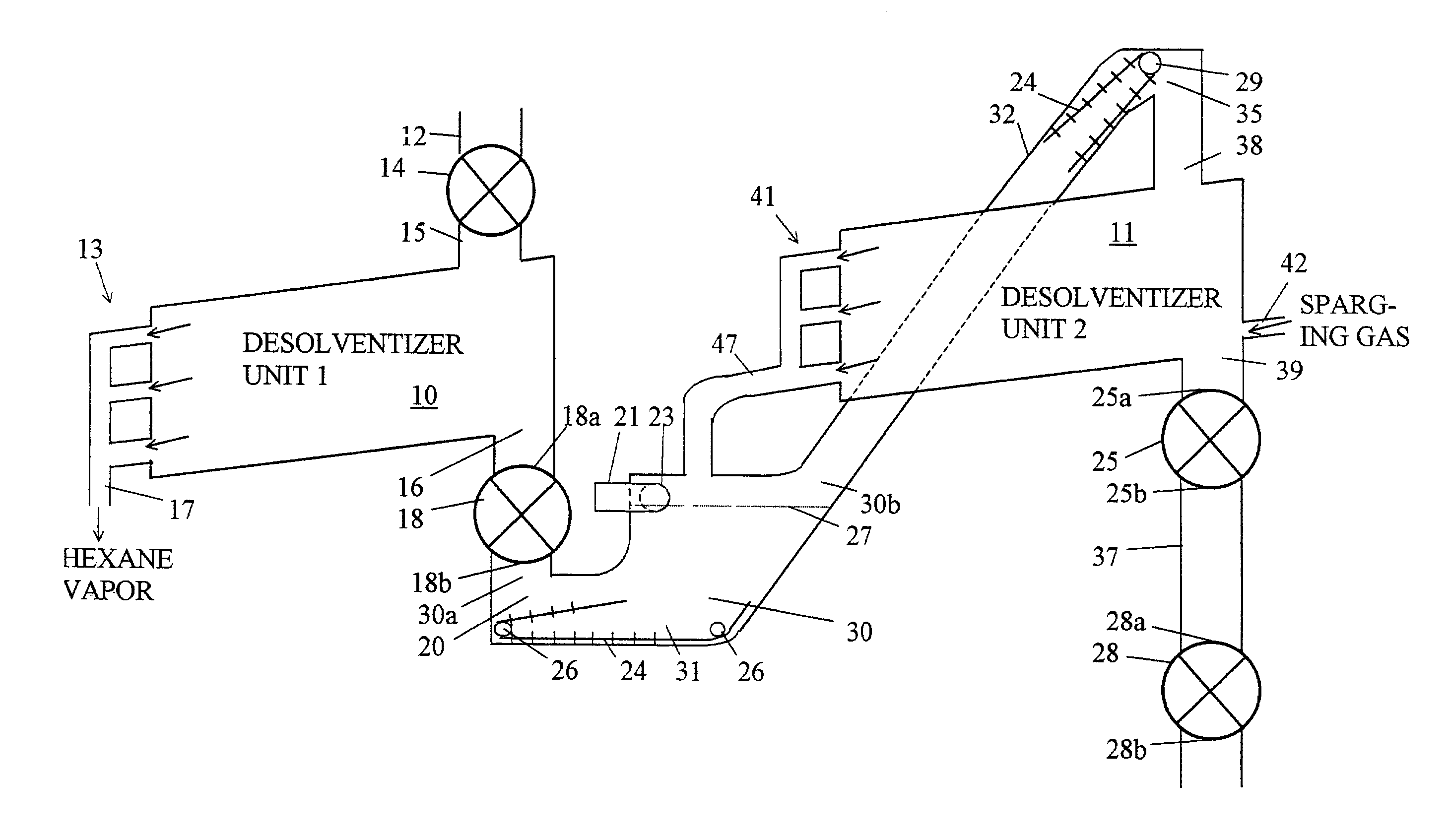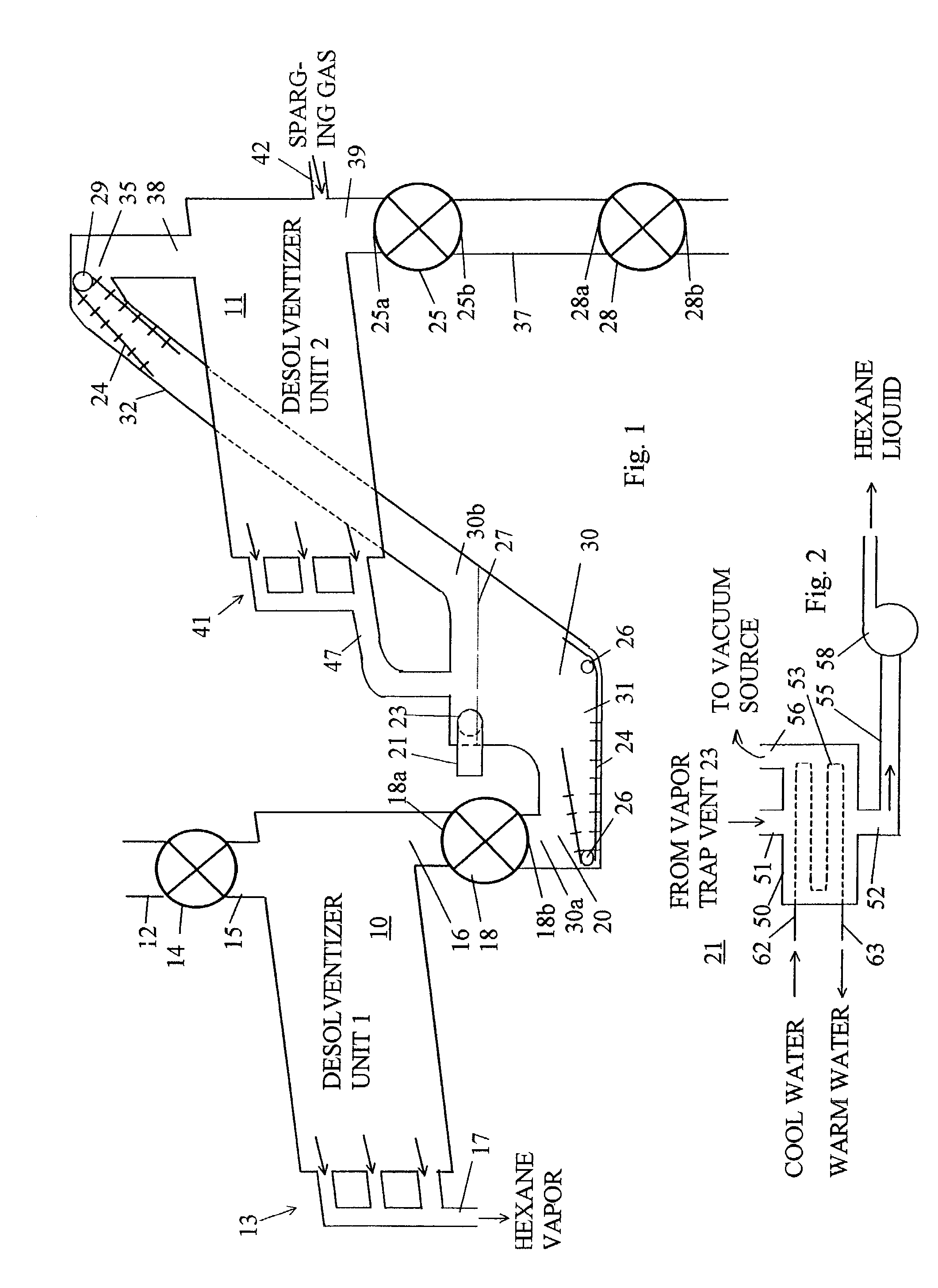Two stage apparatus for desolventizing food grain meal
a technology of food grain meal and apparatus, which is applied in the direction of lighting and heating apparatus, drying machines, drying machines with progressive movements, etc., can solve the problems of toxic solvent and valuable solven
- Summary
- Abstract
- Description
- Claims
- Application Information
AI Technical Summary
Benefits of technology
Problems solved by technology
Method used
Image
Examples
Embodiment Construction
[0017]FIG. 1 shows one version of the invention intended to remove a very high percentage of solvent permeating a quantity of particulate vegetable material of various shapes (hereafter “flakes” or “flaked material” for convenience). The solvent has been added in earlier steps of processing to extract the oil in the flakes. The invention is particularly suited for removing solvent from flakes comprising a substantial amount of protein and whose temperature should be kept below, say 180° F. to allow the protein to retain its high PDI. Solvents having a boiling point below approximately 180° F. at reduced pressure and that in the gaseous state have a higher mass density than air at similar temperature and pressure are suitable for this application. Hexane, isohexane, and heptane are examples of such solvents.
Structure
[0018]The invention uses at least two processing stages, each comprising a desolventizer unit 10 or 11. Each unit 10 or 11 removes a high percentage of solvent present in...
PUM
 Login to View More
Login to View More Abstract
Description
Claims
Application Information
 Login to View More
Login to View More - R&D
- Intellectual Property
- Life Sciences
- Materials
- Tech Scout
- Unparalleled Data Quality
- Higher Quality Content
- 60% Fewer Hallucinations
Browse by: Latest US Patents, China's latest patents, Technical Efficacy Thesaurus, Application Domain, Technology Topic, Popular Technical Reports.
© 2025 PatSnap. All rights reserved.Legal|Privacy policy|Modern Slavery Act Transparency Statement|Sitemap|About US| Contact US: help@patsnap.com


